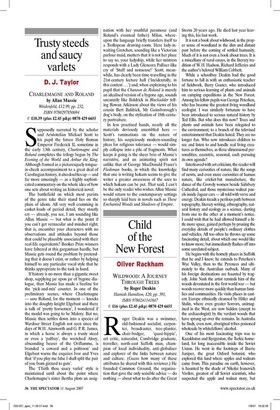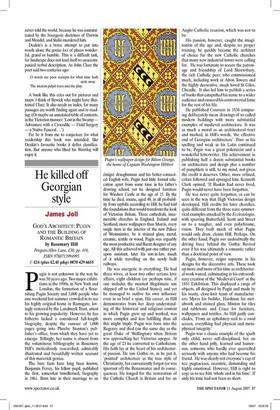Child of the New Forest Oliver Rackham WILDWOOD: A JOURNEY
THROUGH TREES by Roger Deakin Hamish Hamilton, £20, pp. 391, ISBN 9780241141847 £16 (plus £2.45 p&p) 0870 429 6655 Roger Deakin was a swimmer, old-fashioned socialist, carpenter, broadcaster, tree-planter, chair-bodger, 'quasi-hippie', art critic, naturalist, Cambridge graduate, traveller, north-east Suffolk man, champion of local individuality, anti-globaliser and explorer of the links between nature and culture. (Guess how many of these attributes he shared with this reviewer.) He founded Common Ground, the organisation that gave the only sensible advice — do nothing — about what to do after the Great Storm 20 years ago. He died last year leaving this, his last work. It is not a book about wildwood, in the proper sense of woodland in the dim and distant past before the coming of settled humanity. Much of it is not even a book about trees. It is a miscellany of rural essays, in the literary tradition of W. H. Hudson, Richard Jefferies and the author's beloved William Cobbett.
While a schoolboy Deakin had the good fortune to fall in with an enthusiastic teacher of fieldwork, Barry Goater, who introduced him to serious learning of plants and animals on camping expeditions in the New Forest. Among his fellow pupils was George Peterken, who has become the greatest living woodland ecologist. I was similarly fortunate to have been introduced to serious natural history by Ted Ellis. But who does this now? Trees and plants and animals have been relegated to the environment, to a branch of the televised entertainment that Deakin hated. They are no longer fun. Who now introduces children to see and listen to and handle real living creatures as themselves, as three-dimensional personalities, eccentric, seasonal, each pursuing its own agenda? Interleaved with art criticism, the reader will find many curiosities of nature, like the songs of newts, and even more curiosities of human nature, like cricket-bat manufacture, the dance of the Grovely women beside Salisbury Cathedral, and those mysterious walnut panels inside Jaguar cars — all told with verve and energy. Deakin treads a perilous path between topography, literary writing, ethnography, natural history and ecology as a science, darting from one to the other at a moment's notice. I could wish that he had allowed himself a little more space, gained perhaps by pruning the everyday details of people's ordinary clothes and vehicles. All too often he throws up some fascinating detail, about which one would like to know more, but immediately flashes off into some unrelated subject. He begins with the homely places in Suffolk that he and I knew; he extends to Peterken's Wye Valley, then to the Pyrenees and ultimately to the Australian outback. Many of his foreign destinations are haunted by tragedy. John Nash the artist reminds him of the woods devastated in the first world war — but woods recover more quickly than human families and communities. He visits places in eastern Europe ethnically cleansed by Hitler and Stalin, where even greater horrors, unimagined in the West, are now hidden (except to the archaeologist) by the verdant woods that have sprung up over the remains In Australia he finds, even now, aboriginal tribes poisoned wholesale by whitefellows' alcohol. One of his most fascinating trips was to Kazakhstan and Kyrgyzstan, the Turkic homeland, for long inaccessible inside the Soviet Union. He went in the footsteps of Barrie Juniper, the great Oxford botanist, who explored this land where apples and walnuts came from. This paradise on earth, however, is haunted by the shade of Nikolai Ivanovich Vavilov, greatest of all Soviet scientists, who suspected the apple and walnut story, but never told the world, because he was contaminated by the bourgeois doctrines of Darwin and Mendel, and Stalin murdered him.
Deakin's is a brave attempt to put into words alone the genius loci of places wonderful, grand or humble. This is a difficult task, for landscape does not lend itself to unaccompanied verbal description. As John Clare the poet said two centuries ago: words are poor reciepts for what time hath stole away The ancient pulpit trees and the play.
A book like this cries out for pictures and maps: I think of Bewick who might have illustrated Clare. It also needs an index, for many passages are worth finding again and re-reading. (Or maybe an annotated table of contents, in the Victorian manner: 'Lost in the Swamp — Adventure with a Crocodile — Field Surgery — a Native Funeral ...') Far be it from me to conjecture for what readership this book was intended: like Deakin's favourite books it defies classification. But anyone who liked his Waterlog will enjoy it.










































 Previous page
Previous page